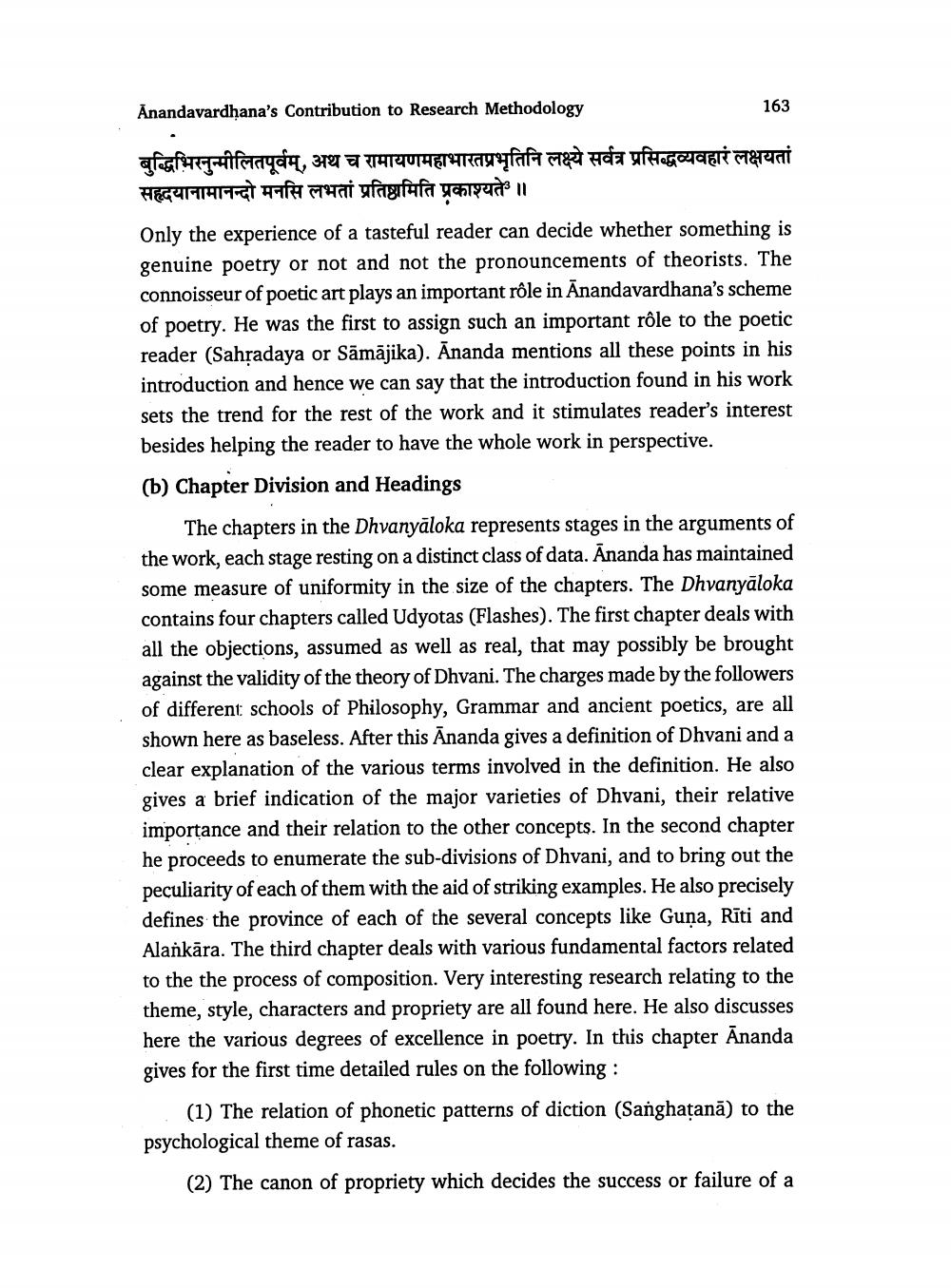________________
Anandavardhana's Contribution to Research Methodology
163
बुद्धिभिरनुन्मीलितपूर्वम्, अथ च रामायणमहाभारतप्रभृतिनि लक्ष्ये सर्वत्र प्रसिद्धव्यवहारं लक्षयतां सहृदयानामानन्दो मनसि लभतां प्रतिष्ठामिति प्रकाश्यते ॥ Only the experience of a tasteful reader can decide whether something is genuine poetry or not and not the pronouncements of theorists. The connoisseur of poetic art plays an important rôle in Anandavardhana's scheme of poetry. He was the first to assign such an important rôle to the poetic reader (Sahradaya or Sāmājika). Ānanda mentions all these points in his introduction and hence we can say that the introduction found in his work sets the trend for the rest of the work and it stimulates reader's interest besides helping the reader to have the whole work in perspective. (b) Chapter Division and Headings
The chapters in the Dhvanyaloka represents stages in the arguments of the work, each stage resting on a distinct class of data. Ānanda has maintained some measure of uniformity in the size of the chapters. The Dhvanyāloka contains four chapters called Udyotas (Flashes). The first chapter deals with all the objections, assumed as well as real, that may possibly be brought against the validity of the theory of Dhvani. The charges made by the followers of different schools of Philosophy, Grammar and ancient poetics, are all shown here as baseless. After this Ānanda gives a definition of Dhvani and a clear explanation of the various terms involved in the definition. He also gives a brief indication of the major varieties of Dhvani, their relative importance and their relation to the other concepts. In the second chapter he proceeds to enumerate the sub-divisions of Dhvani, and to bring out the peculiarity of each of them with the aid of striking examples. He also precisely defines the province of each of the several concepts like Guņa, Rīti and Alankāra. The third chapter deals with various fundamental factors related to the the process of composition. Very interesting research relating to the theme, style, characters and propriety are all found here. He also discusses here the various degrees of excellence in poetry. In this chapter Ananda gives for the first time detailed rules on the following:
(1) The relation of phonetic patterns of diction (Sanghatanā) to the psychological theme of rasas.
(2) The canon of propriety which decides the success or failure of a




